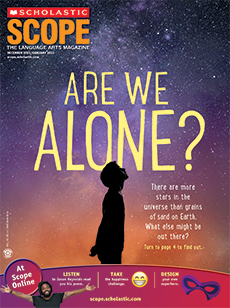Fourteen-year-old William Kamkwamba stood at the top of a tall wooden tower, waiting for a miracle.
Gathered on the ground below were people from William’s small village in Malawi, a country in southeast Africa. The crowd buzzed with confusion and excitement.
What is this kid doing?
And what is THAT?
Attached to the top of the 16-foot tower was a strange machine: an upside-down bicycle bolted to a rusted metal fan. Four long plastic blades stuck out from the fan, creating the shape of an X.
This odd-looking contraption was a windmill, a device that converts energy from the wind into electricity. Like most people in their village, William’s family did not have electricity in their home. William’s hope was that this windmill would change that.
William had been working on the windmill for months—rummaging for odds and ends in a scrapyard, poring over science textbooks, tinkering, and testing. Now, finally, it was ready.
“Let’s see how crazy this boy really is,” someone called out.
William gripped a small lightbulb that was connected to the windmill with wires. Then he felt it: the beginnings of a breeze.
His machine rumbled and groaned, like a caged beast waiting to be set free. Here it goes, he thought.
Suddenly, the breeze swelled into a powerful gust that knocked William off balance. He clung tightly to a wooden rung as the tower swayed dangerously back and forth. The windmill’s long plastic blades began whirring furiously.
William stared at the bulb in his trembling hand, willing it to flicker to life. Would his dream of lighting up his home come true?
Fourteen-year-old William Kamkwamba stood at the top of a tall wooden tower. He was waiting for a miracle.
William lived in a small village in Malawi, a country in southeast Africa. People from his village gathered on the ground below him. The crowd buzzed with confusion and excitement.
What is this kid doing?
And what is THAT?
A strange machine was attached to the top of the 16-foot tower. It was an upside-down bicycle bolted to a rusted metal fan. Four long plastic blades stuck out from the fan, making an X shape.
This odd-looking machine was a windmill. That’s a device that converts energy from the wind into electricity. Like most people in their village, William’s family did not have electricity in their home. William hoped this windmill would change that.
For months, William had worked on the windmill, searching in a scrapyard for parts and poring over science textbooks. He tinkered and tested. Now, finally, it was ready.
“Let’s see how crazy this boy really is,” someone called out.
William gripped a small lightbulb. It was connected to the windmill with wires. Then he felt it: the beginnings of a breeze.
His machine rumbled and groaned, like a caged beast waiting to be set free. Here it goes, he thought.
Suddenly, a strong wind knocked William off balance. He clung tightly to a wooden rung. The tower swayed back and forth. The windmill’s blades began spinning furiously.
William stared at the bulb in his trembling hand, willing it to flicker to life. Would his dream of lighting up his home come true?

